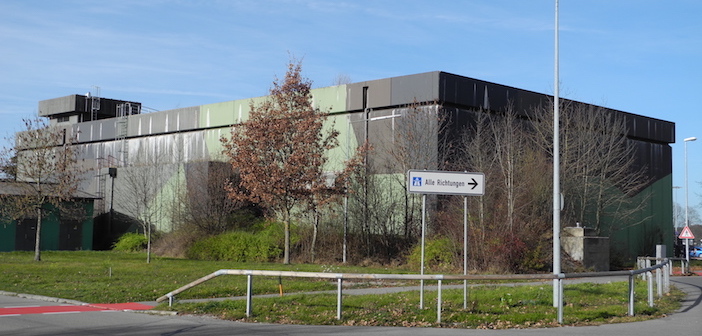An entrepreneur from Southern Germany has big plans to build a medical cannabis research facility in a Cold War-era military installation.
The object of desire — a nuclear bunker in the German state of Bavaria — that boasts a 140-ton steel gate, airlocks, and meter-thick concrete walls.
For decades, NATO bombs were stationed at the nearby airport. If the Soviet Union had attacked the Federal Republic with nuclear weapons, the counter-attack would have been initiated from this part of Bavaria.
Before entrepreneur Christoph Roßner inquired about the possibility of growing cannabis, the vacant nuclear bunker was on its way to becoming either a computer server center or a venue for parties and events. But when the federal government announced their intention to issue licenses for cannabis cultivation, the 47-year-old bunker that’s been idle for 17 years was at the forefront of Roßner’s mind.
Ideal Cultivation Conditions
The bunker provides the best conditions for indoor growing and requires no major structural renovations to meet Germany’s high safety requirements for cannabis cultivation licensing.

Roßner was given the opportunity to present his company Bunker UG at an official government event called “Business Talk About Bavaria’s Future,” earning approval from the Bavarian Ministry of Science in the process.
Roßner describes Bunker UG’s profile:
“Through the research and development mandate according to ethical and legal guidelines, we make our contribution to the complete development of the therapeutic potential of cannabis as a medicine. Our research results are primarily intended to be made available to the federal government as well as the health insurance companies in order to provide the basis for a just patient care of cannabis as natural remedies at affordable prices.”
Although the Federal Institute for Drugs and Medical Devices (BfarM) has repeatedly rejected Roßner’s application for “cannabis cultivation for scientific purposes”, Roßner has been able to find increasing support from politicians and local business over the past two years, leading to an open dialogue between BfArM and Bunker UG.
Independent Research
The renowned Technische Universität (TU) Munich showed interest in Bunker UG’s research project and connected Roßner with Professor Jörg Bohlmann in Canada. Bohlmann is researching cannabis terpenes at the University of British Columbia, among others, and has deciphered the genome in 140 Canadian and Dutch hemp plants.
Roßner and Bohlmann would like to combine their efforts.
“We plan to explore the metabolism of 140 medical cannabis strains and to combine it with Dr.Bohlmann’s study results. To this end, we will grow 140 medical strains from Canada and the Netherlands in our bunker under laboratory conditions in cooperation with the TU Munich. Professor Eisenreich and two of his employees from the TU-Munich will look after the German part of the project,” Roßneran explained in an interview with Marijuana.com.
Bunker UG would like to fill their 950-square-meter facility with 15 employees to participate in independent research.
Next week, Bunker UG will meet with BfArM for a crucial hearing procedure. Roßner believes this will be the final hurdle before his long-awaited cultivation license is granted.
Cannabis for up to 150 Patients?
As soon as the permission is granted, lights, floors, ceilings, and laboratory equipment must be installed throughout the facility. Roßner has already found a partner in ThyssenKrupp to develop and supply technical equipment for plant extraction within the framework of the research project.
In addition to the expected 250,000 Euros in research funding from a variety of sources, Roßner has also been able to win investors for his project. “After the support of the Bavarian state government, I was surprised at the numerous inquiries. This allowed me to choose my partners carefully. Of course, Bunker UG is open to further partnerships and research projects. But: We will always stick to the principles of compassionate care to develop the best and most effective medical products for patients,” added Roßner.
Whether Roßner can alleviate the scarcity of medical cannabis in Germany is still undetermined. Although he would like to provide 150 cannabis patients with medicine, it is also possible that not a single gram of cannabis will ever leave the bunker. A German cultivation license for research purposes does not yet allow for any distribution of medical cannabis — not even for compassionate reasons. Either way, patients in Germany and abroad stand to benefit greatly from this scientific endeavor.
If the hearing proceeds as planned, the first cannabis plants could be growing in the vacant nuclear bunker by January.
credit:marijuana.com

